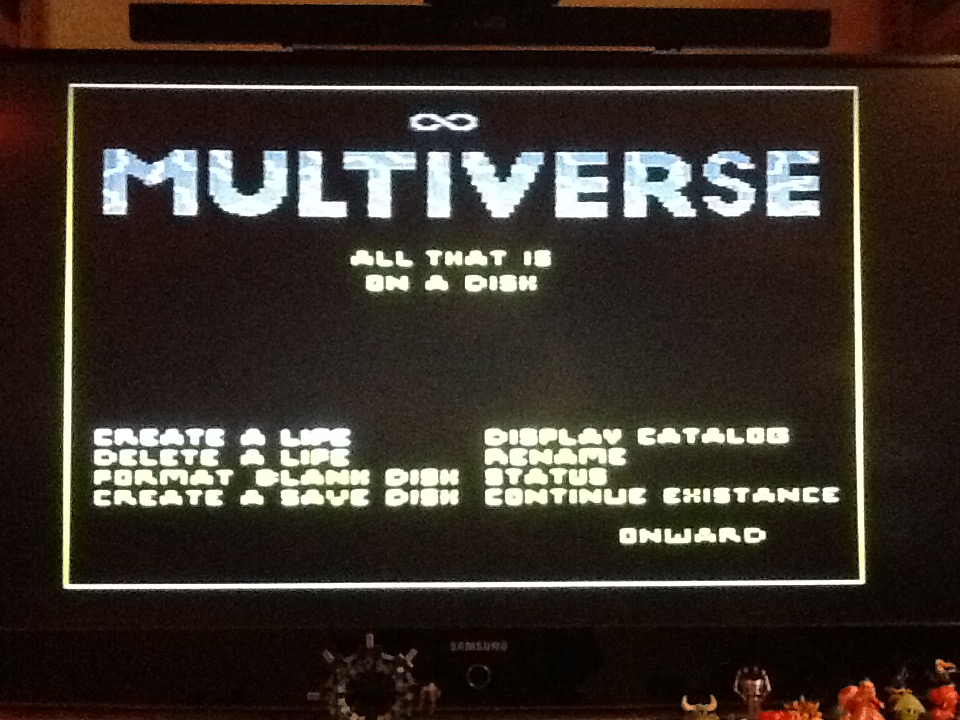
Multiverse Title Screen
The titles animated - the letters spelling Multiverse in marble fade to reveal animating scenes... landscapes, starfields, and other images:
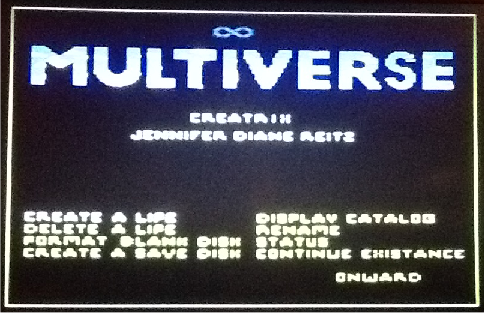
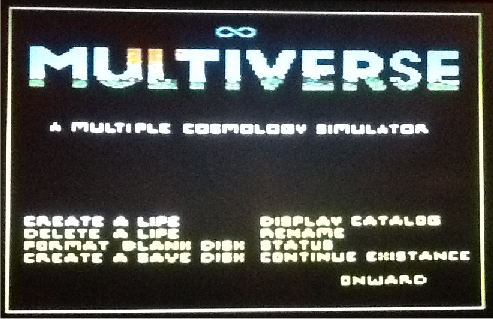
After that, we get the character creation screen:
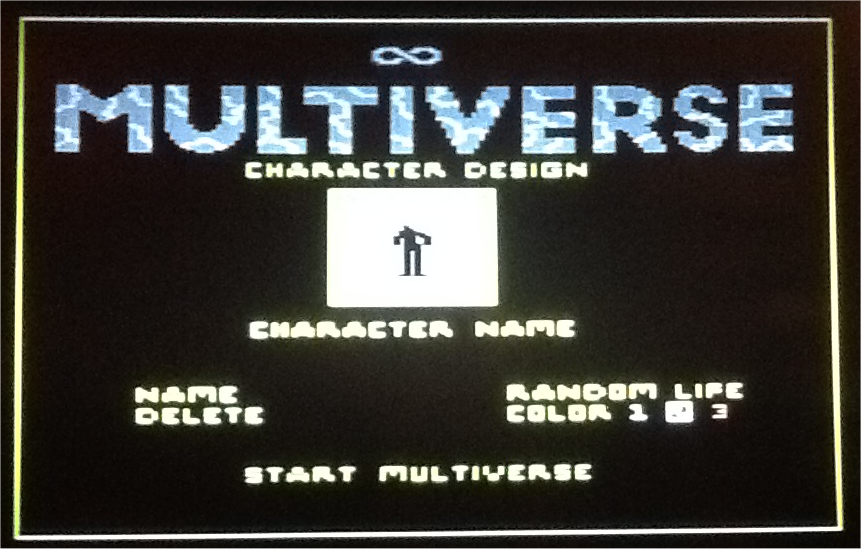
Different bodies could be combined with different heads. You did not have
to be human.
Because of the limitations, color choices were limited, as
was the size of your character.
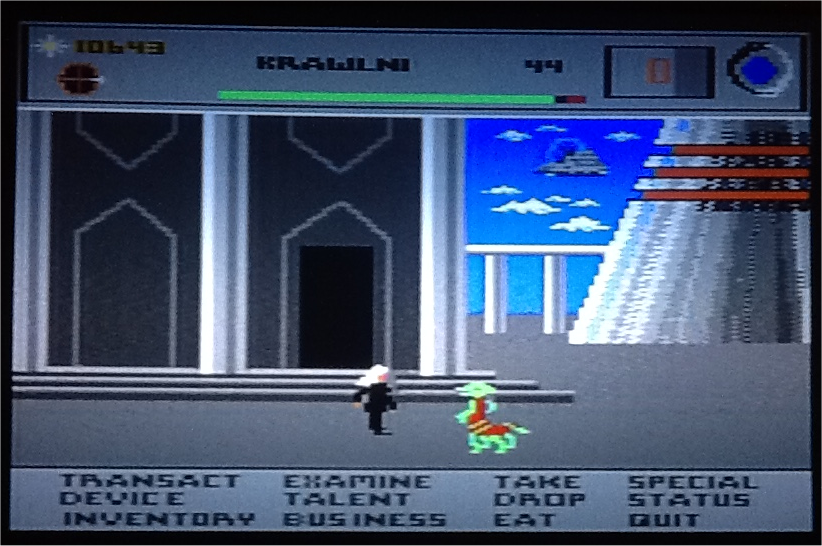
Players started on the hub-world of Krawlni. Kralni was a super-advanced
multicultural civilization that had mastered
multiversal travel. They
explored countless universes, each with unique physical laws.
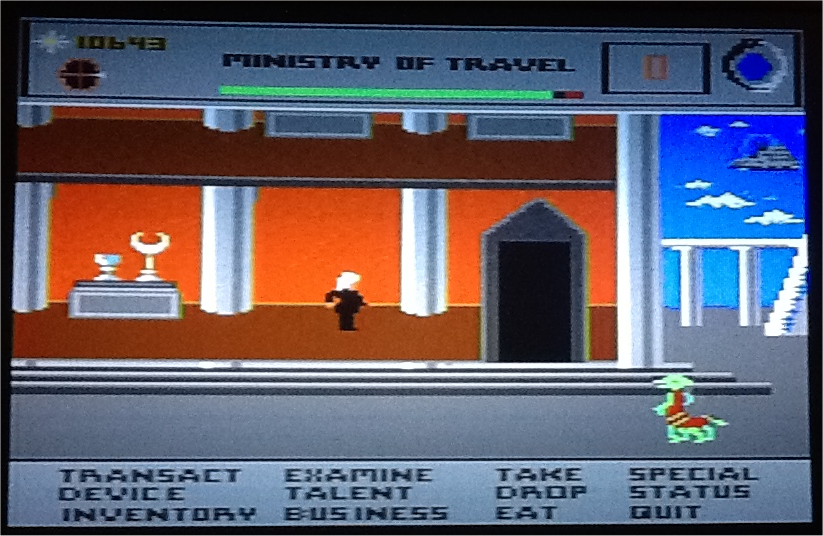
When you enter a building, the front fascade vanishes, revealing the
interior. Essentially there were only two
planes of movement. One for
landscapes, and one for interiors.
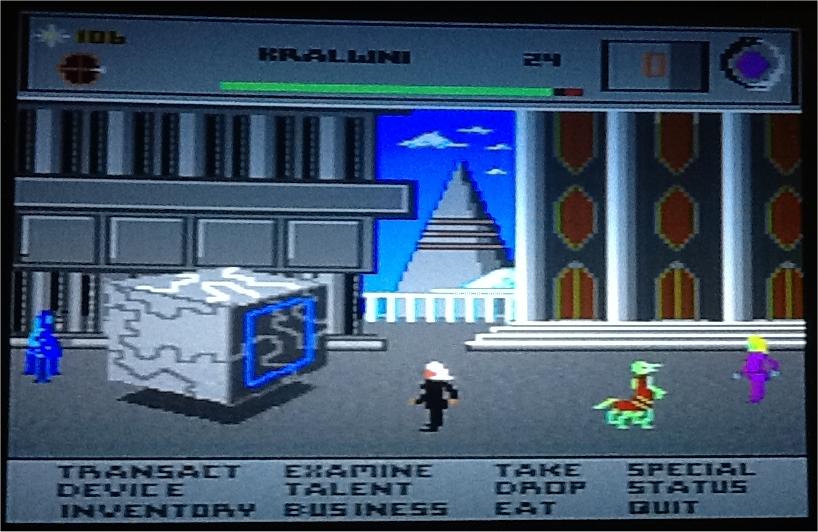
The cube is a Multiversal Mover. You enter through the side with the blue
square. Players could enter the buildings in Krawlni and
visit shops or
claim one of several apartment rooms available. The room acted as an
ultimate save point - if the player died, they would
always return to
their room on Krawlni (don't die!). It was a pain to get back to the
coordinates they had died in. You could also save
inside the Mover
whereever you were in the many universes.
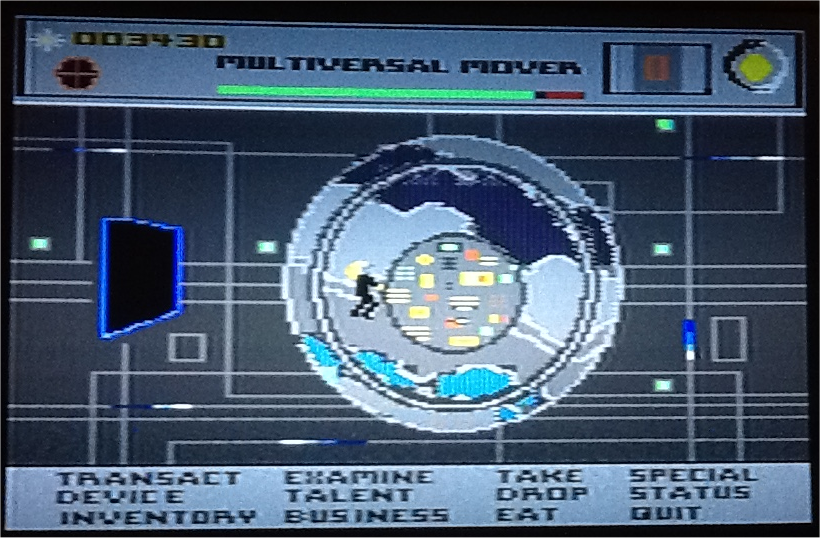
Inside, the Multiversal Mover was a free-scrolling representation of a
zero-G space, very high-tech.
The player could float around this space,
but the useful bit was the floating ball-shaped console in the middle.
that console is where one could access a screen to set coordinates for
multiversal travel.
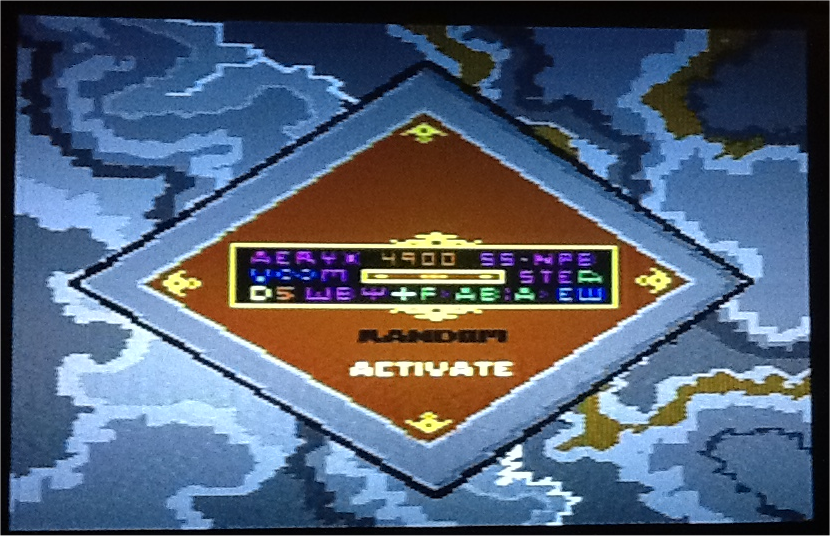
This is the control screen. By using the joystick, the various sections
could be altered to choose a specific
destination to travel to. The
first part was the type of universe, the next was a number that acted as
an index
for procedural generation, and the remaining numbers and
letters set other parameters for the creation of
a unique cosmos.
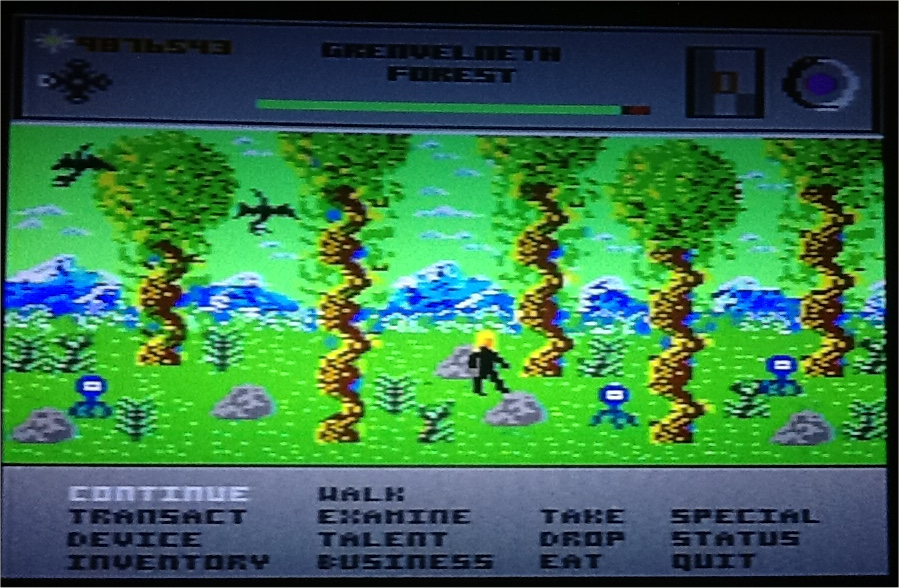
The player might end up anywhere. In this case, a forest on a planet with
a green sky. Small creatures would crawl or fly
or bounce around the
screen. Everything was procedurally generated - rules determined how to
combine creature, plant
or environmental components to 'print' a
final, finished sprite or background image to the screen. Creatures were
composed
of a top and a bottom, trees were painted using sections
printed to the screen for trunk or limbs or tops, even small plants
were generated using blocks of pixels printed over each other with
transparency. Background images were given simple
collision volumes
forcing the player to walk around them or jump over them or whatever. The
player had limited movement
within a region that made up the lower
third of the play window. The player sprite could only face left or right,
but it worked
very well even so.
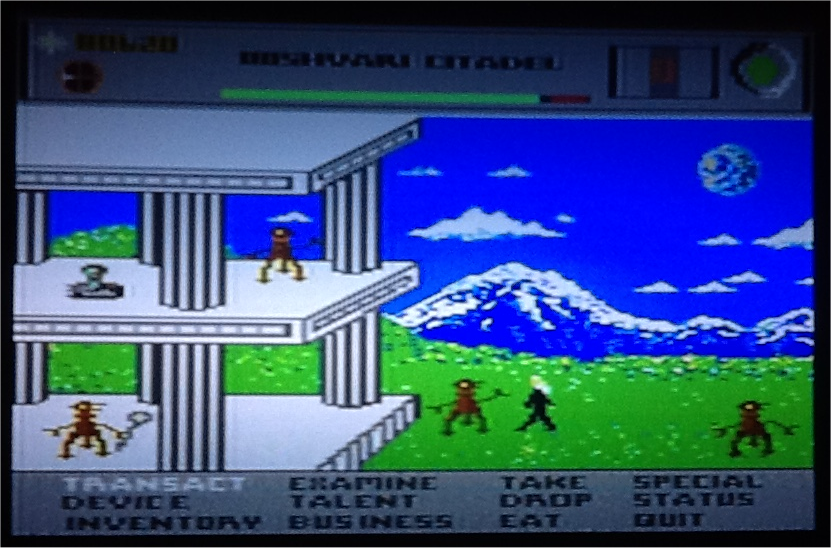
Aliens and alien buildings were generated according to rules. Aliens were
made the same way as the player,
a top and a bottom were combined to
make a finished sprite set. Pressing the menu button allowed selections to
be made.
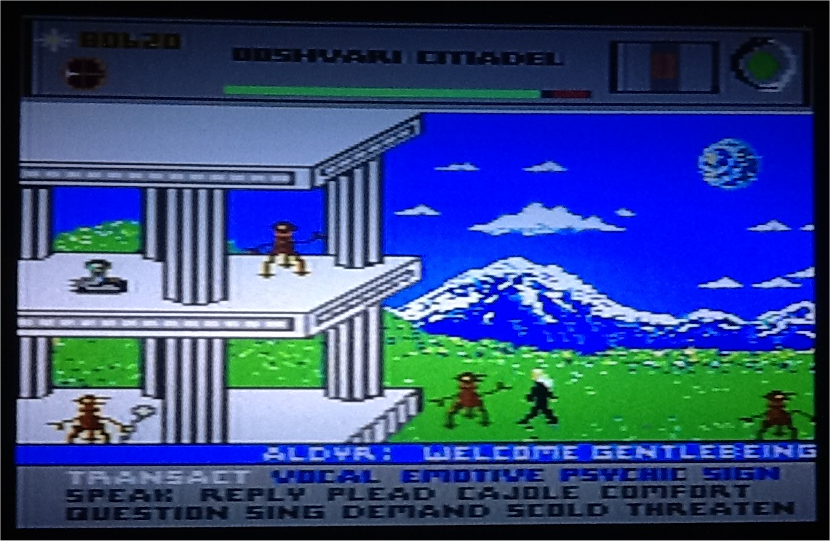
Communication happened in a scrolling strip at the bottom. The player
would not necessarily know the language
of the aliens in the game, and
in that case would see generated fake-language words. The use of
translator devices
in one's inventory - rather like Star Trek - changed
the scrolling words to readable english.
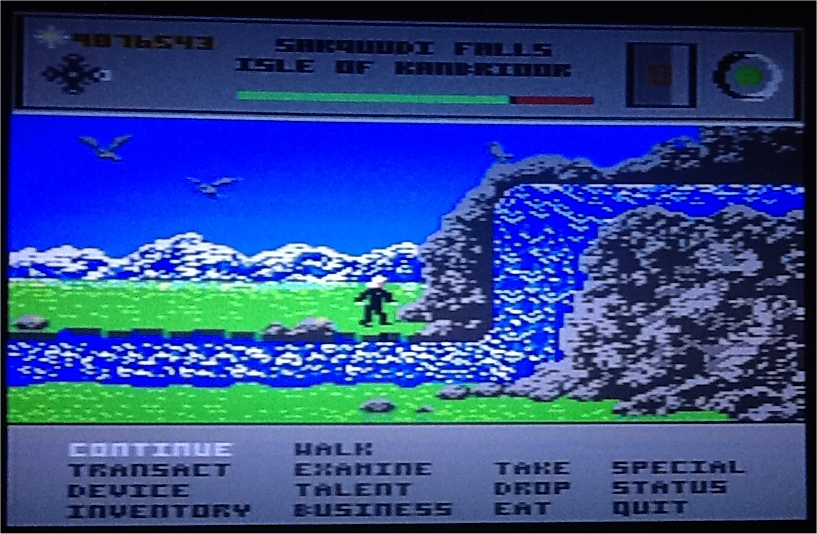
Because of the free movement within the play area of the screen, regions
with illusory 'height' were a trivial
matter to generate. The player
here might cross the river, and climb up the rocks, for instance, to reach
the
level above. Or, if they had a jet pack, or a talent like
levitation, they could fly through the region.
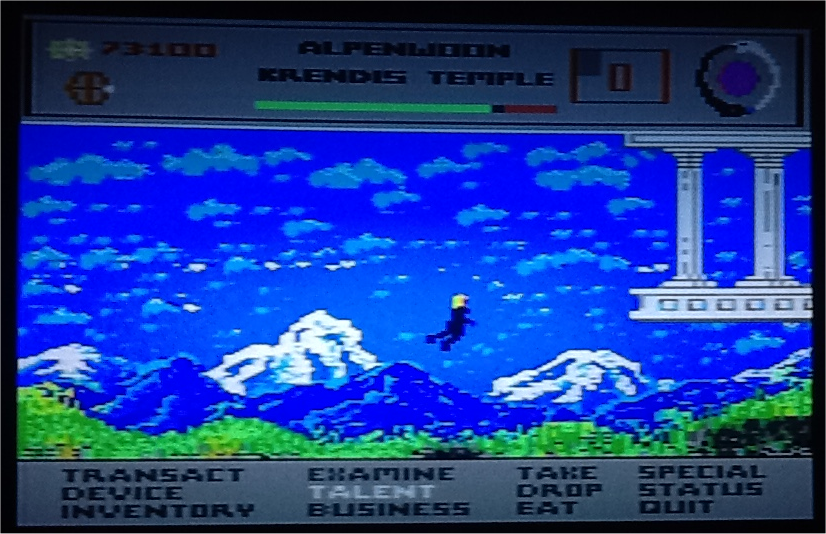
Talents were essentially psionic powers, they could be gained in various
ways. Talents included levitation (shown here),
or healing, or...
basically spells.
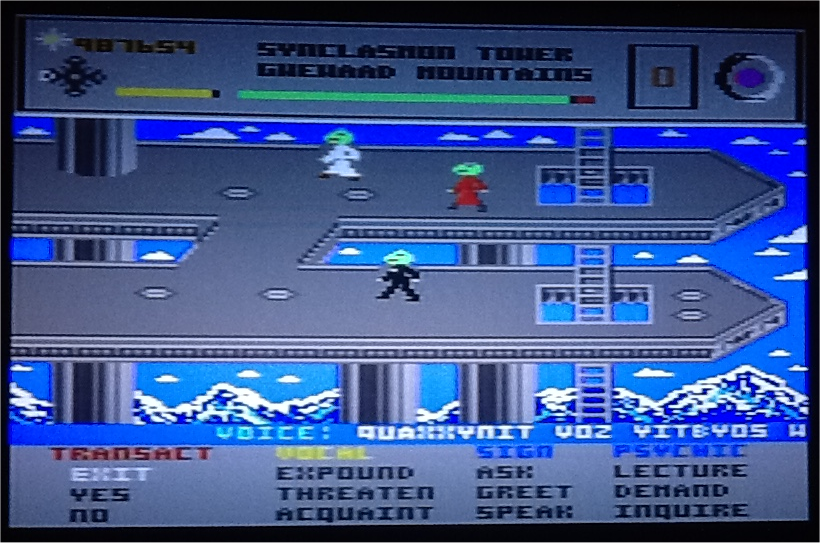
Here is an example of a language that the player does not know, and has no
translator for. Also note that
a player need not be human - this is a
lizard-person version of the base character shown.
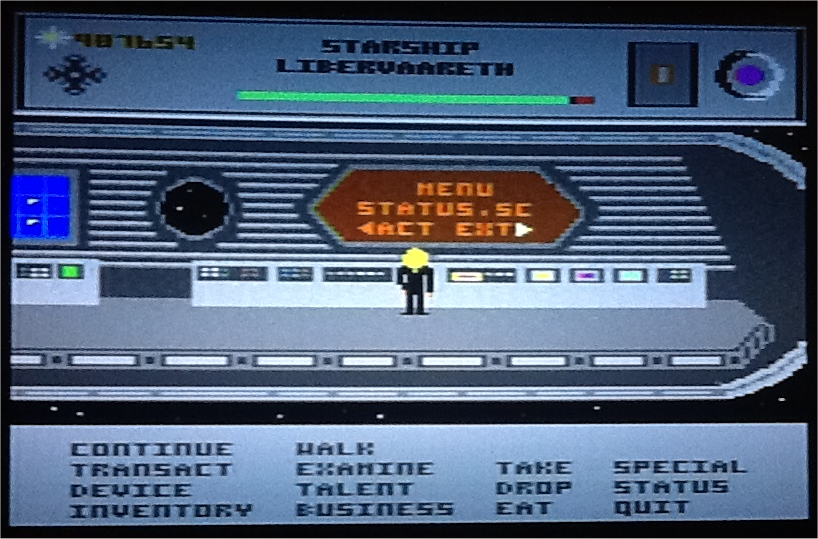
Owning a large star ship was possible, and this is a view inside just such
a ship. Standing in front of the
console allowed access to various ship
menu options, presented on the 'screen'.
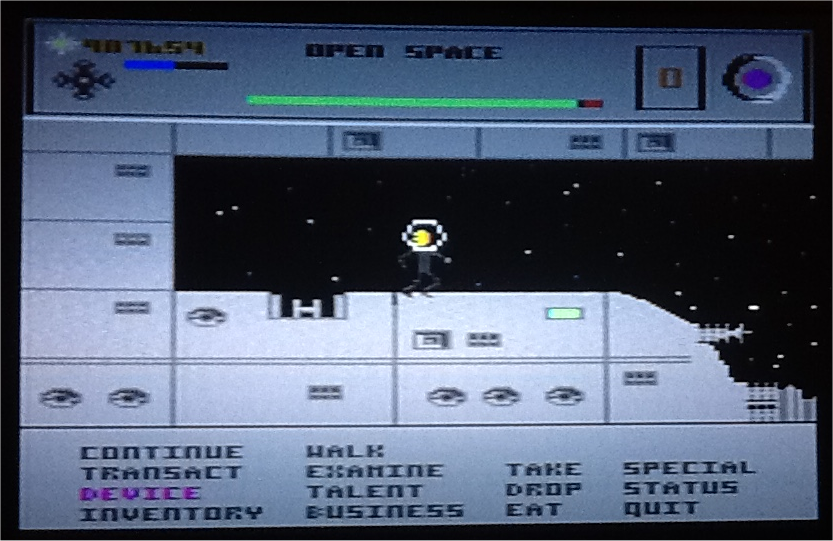
You could exit the ship, in space, and do an EVA. Since a starship is
basically just a type of building, the same
mechanism is in place,
outside the fascade of the ship appears, hiding the interior, thus making
it look like the
player is truly 'outside'.
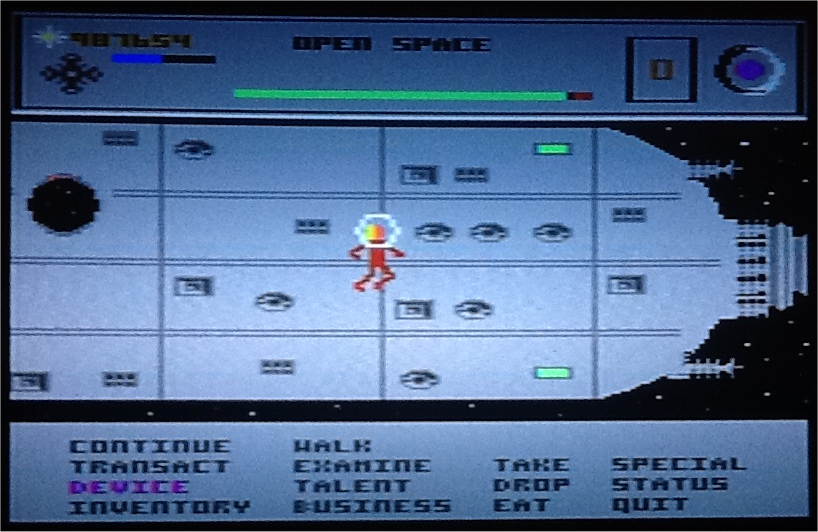
The player could then float around and see their ship from the outside...
or go visit an asteroid or other
object in space. Essentially the same
code used for the inside of the Multiversal Mover - a freescrolling
region the player could move around in.

Every universe had a name, and a map. This is the map of just one of
countless universes. Everything was generated
by indexing a 10K block
of random numbers, which told the program where to paste and print every
image, or how to
generate any name or word or any other part of the
game, using rules. This universe is like our own - galaxies and space. But
there were universes where this map would look like floating triangles or
ribbons of land hanging in a colorful void.
There were eight different
- very different - available universe types.
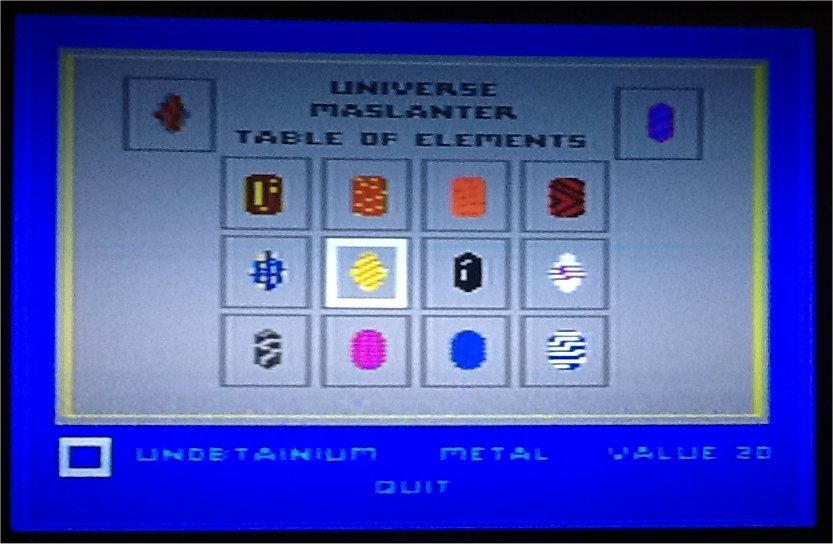
Every universe had it's own, unique periodic table of elements. The
fantasy elements could be found on
planets, or on asteroids, they could
be traded for 'Til' a form of universal currency. Different elements were
more or less valuble, and more or less rare.
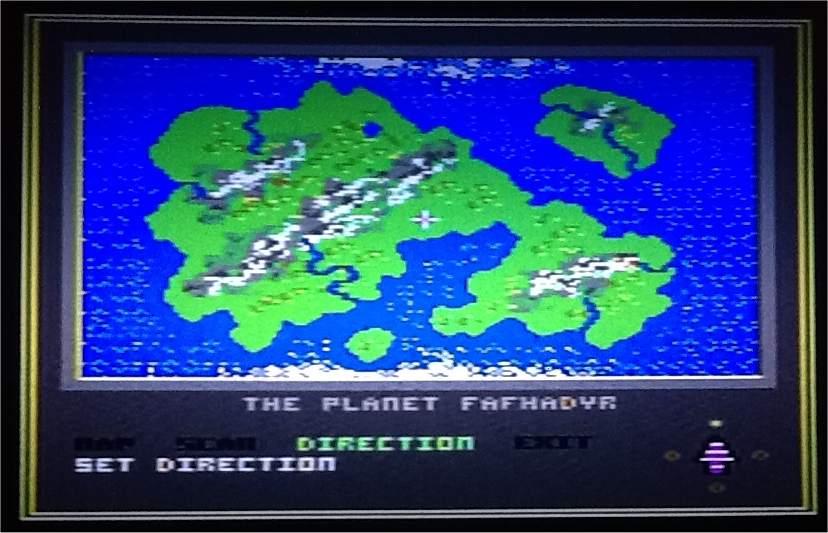
Here is a map of an earthlike planet. The map scrolled in the window. The
maps were divided into a grid of
lines, each line passed over the
pixels of the map. The pixel colors determined what a given region would
contain
once entered. Green was grasslands, white was mountains with
snow, blue was water, dark green was forest.
A region - a side
scrolling 'level' - could contain multiple types of environment. Every
region had a start and an end.
The start and end were points on the
map, above. To cross a planet meant selecting regions and traversing them.
I got the idea from Activision's 'Pastfinder'.

The same map, scrolled a little to show how that works.
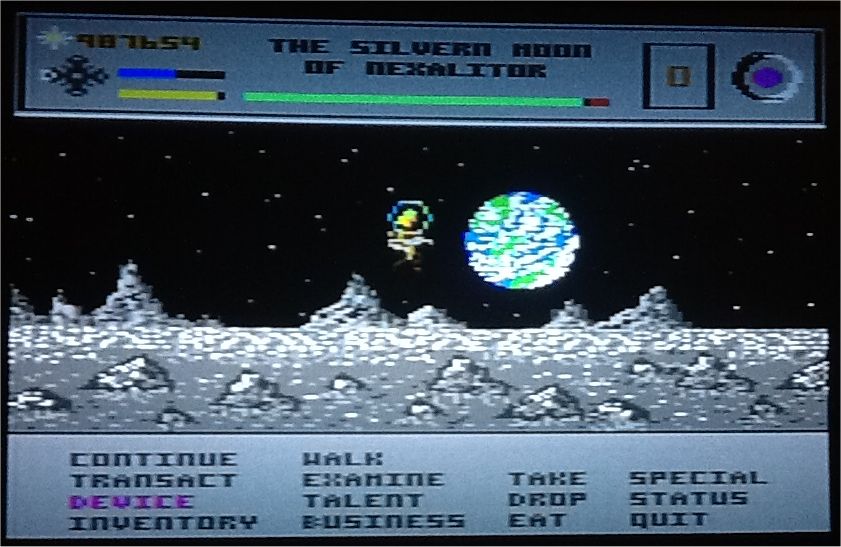
One could land on a moon, here is the player with a helmet and a raygun bouncing in low gravity.
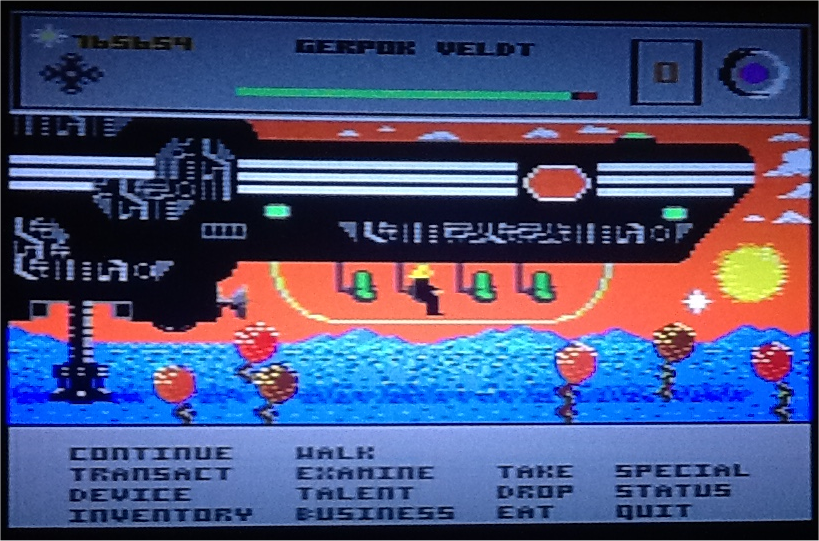
A space ship makes a landing on a planet with... balloon trees or
something. Procedural generation is always
filled with stuff you cannot
predict.
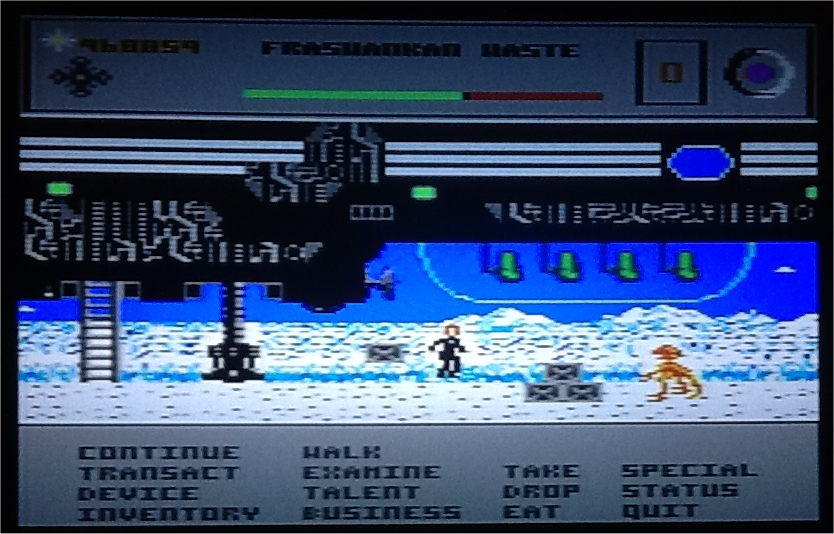
Same ship, different planet. In this case, the player is involved in a cargo dispute with a weird creature.
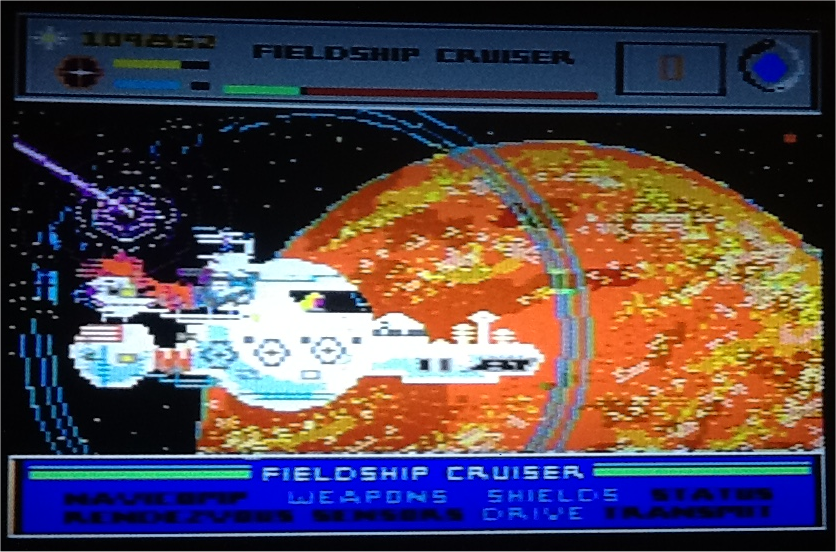
Space battles were possible. Here is a small ship being hit and damaged.
These scenes played out
like movies, they were not joystick-play.
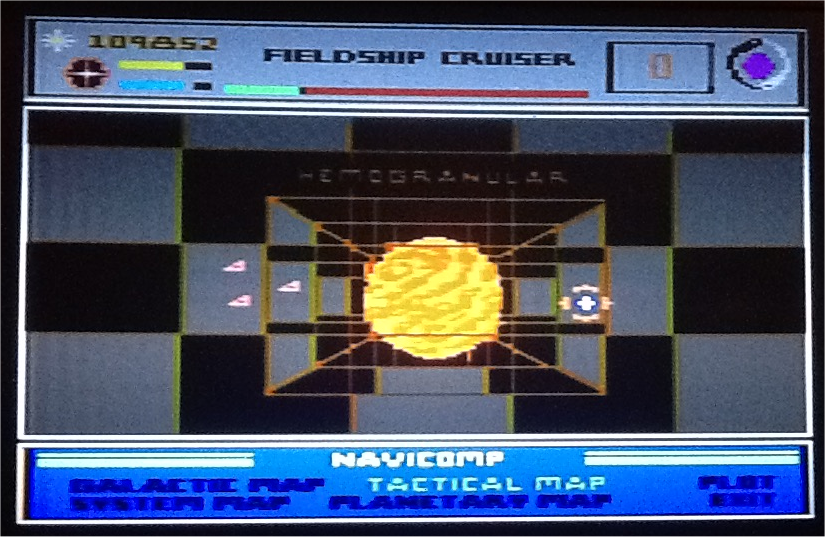
Space combat was tactical, not real-time. You made moves on a grid, and the results were shown as above.
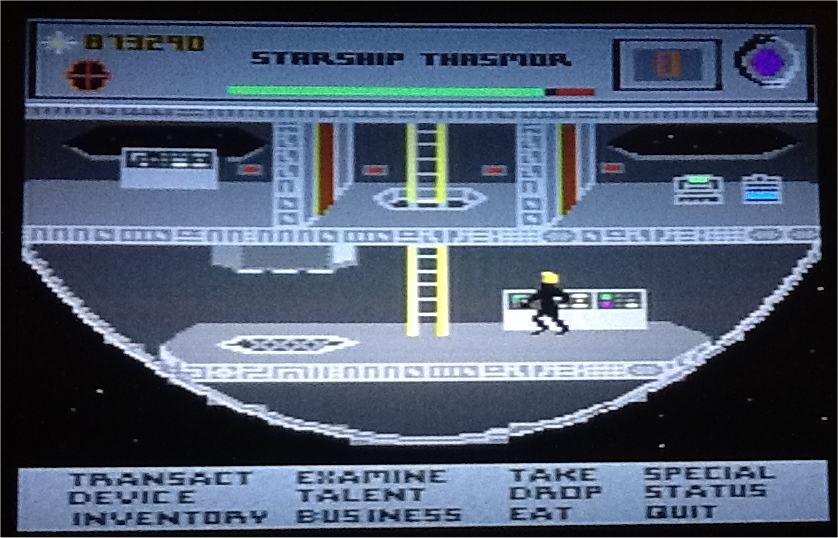
Some ships, capitol ships, could be quite large. Since they could not land, they used...
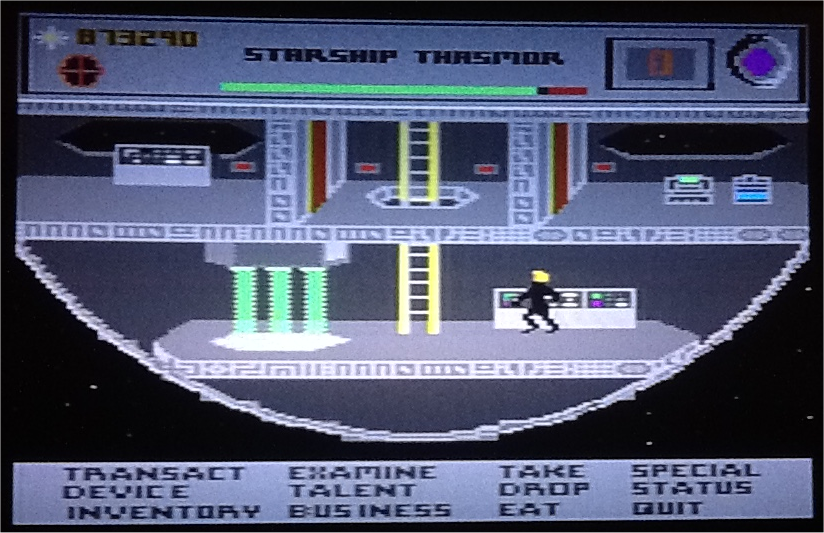
Teleporter beams. Hey - I really liked Blake's Seven and Star Trek.
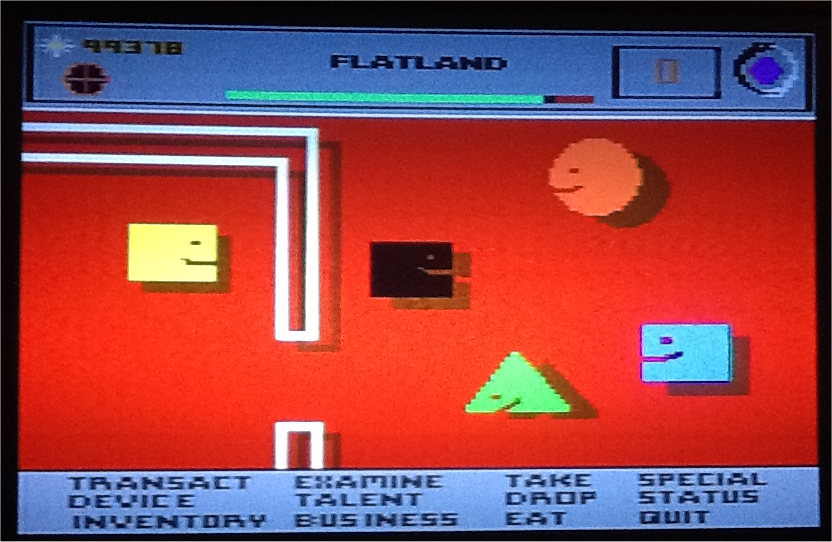
Flatland - Edwin Abbott's Flatland, sort of, was one of the possible eight universe variants.
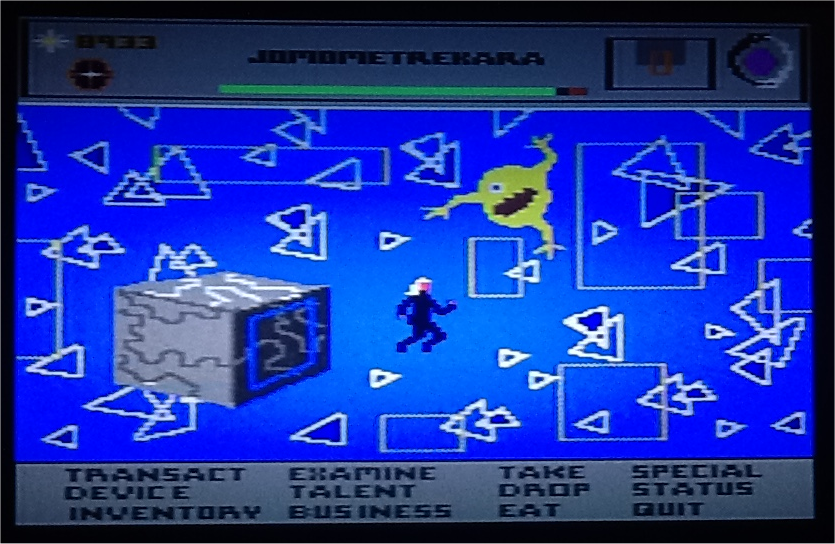
Another was this chaotic cosmos of floating planes and weird creatures.
There were no planets as
we understand the concept here.
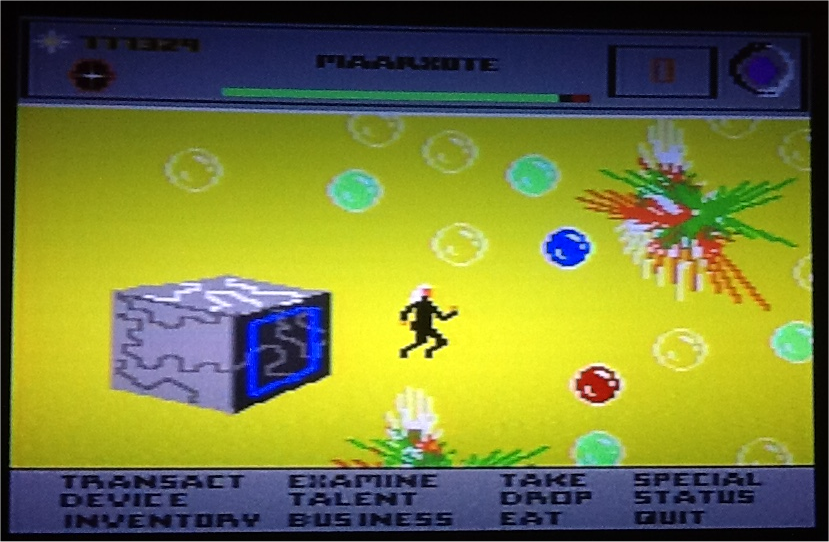
I actually had a dream about this particular weird, gravity-less universe.
In the game, those KIX-like objects
served as the local 'trees' for
lack of a better term. The people were orbs.
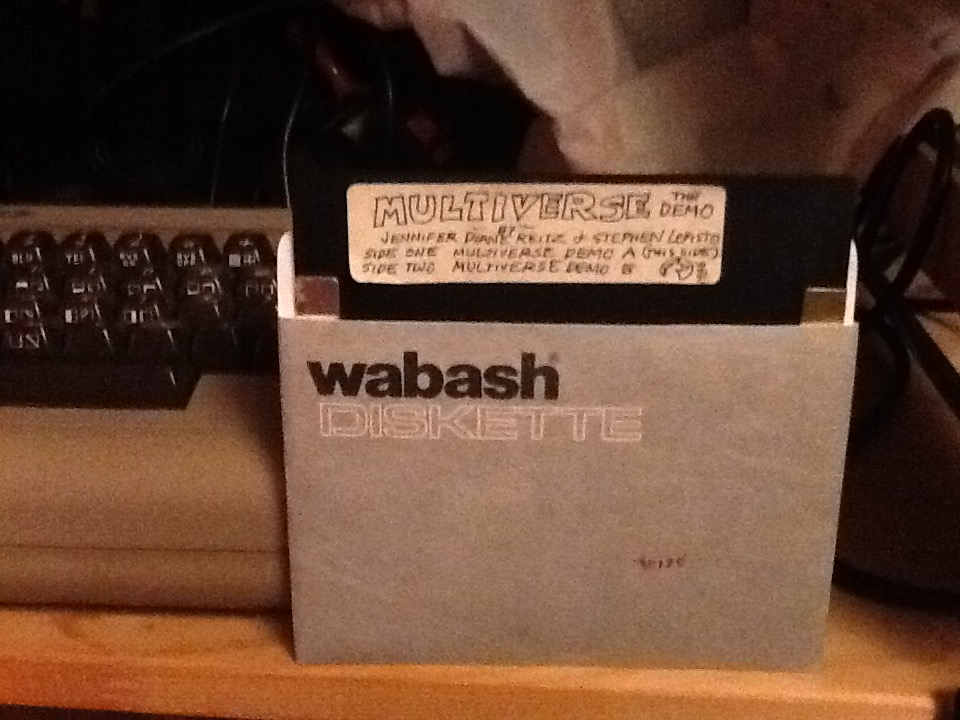
This is the disk. It is very old and it doesn't run very well anymore. It was a pain trying to get these images.
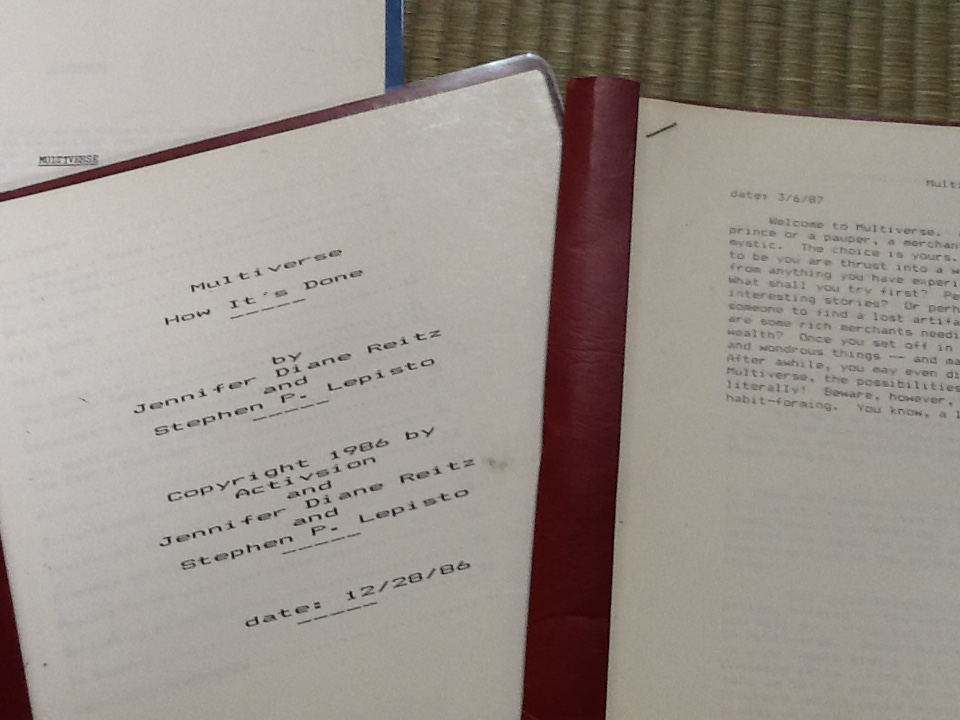
These were the documents I used to get the project greenlighted at
Activision. My producer was Brenda Laurel. She
really fought hard for
me, but I never got to see my game finished or released.
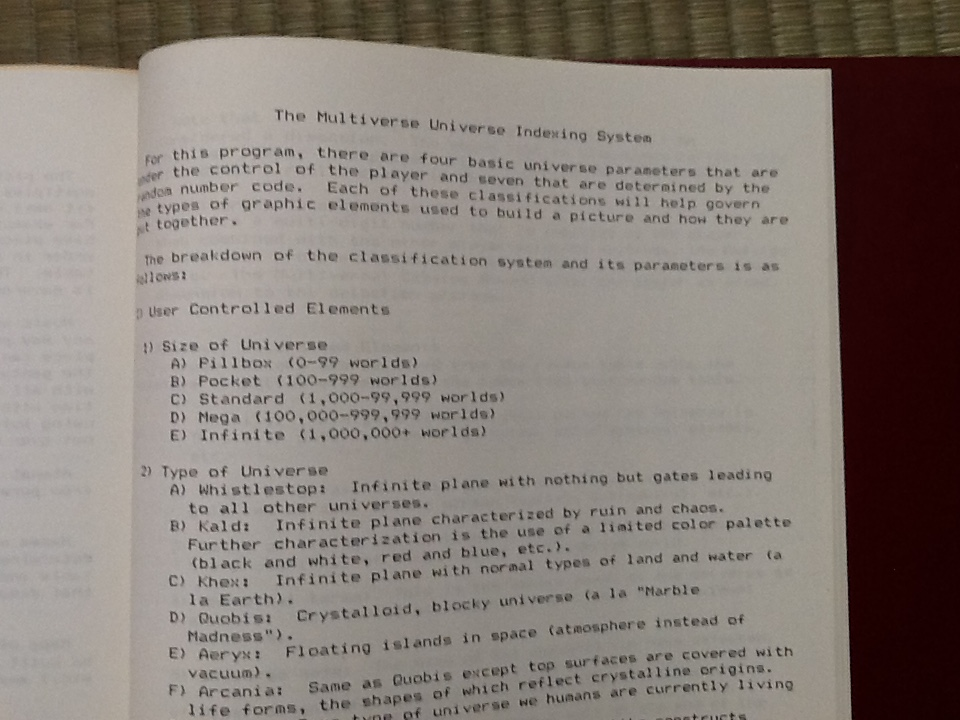
You have to go into a lot of detail to get a game sold. I walked away the
same day I went in with a 10K check. I was
so proud at the time. After
Activision folded and was sued, I got all my rights back. Not that it
matters in the least. I also
got a pitiful class-action check too.
Activision came back, a year later. The whole venture was just a mess.
